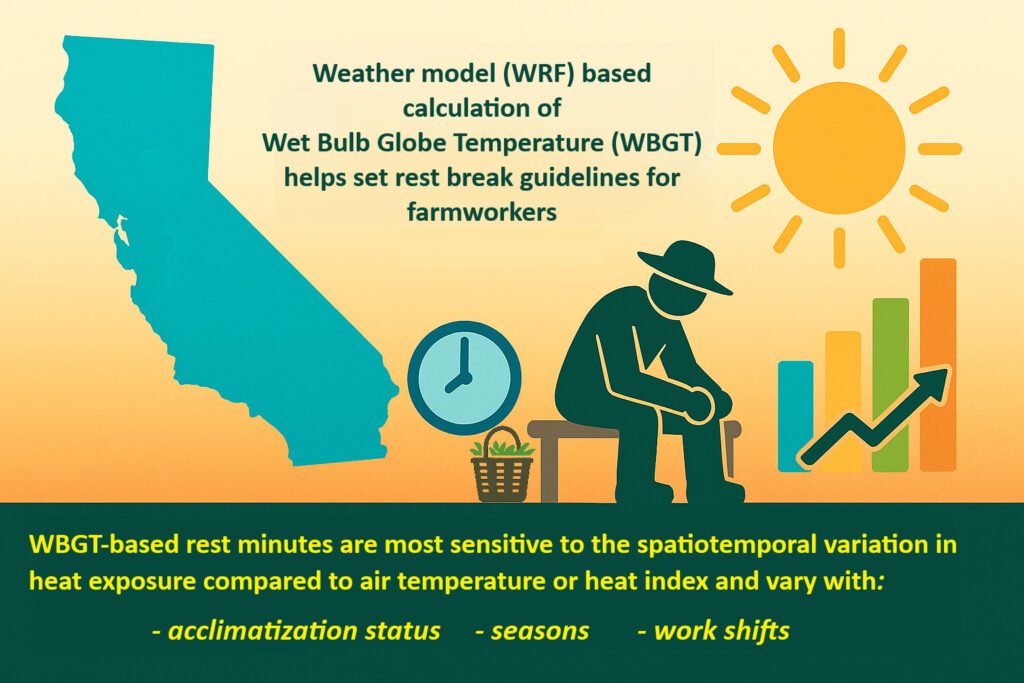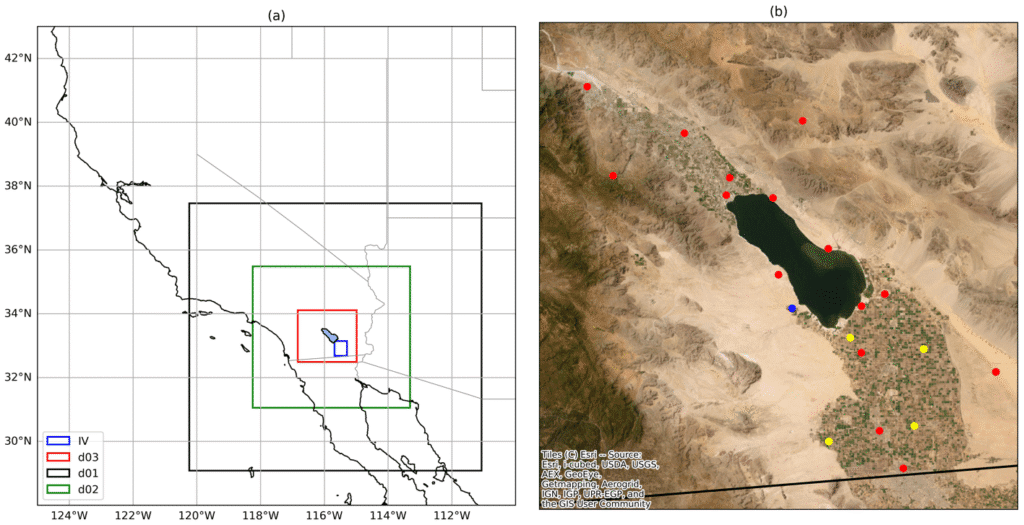
Our research article, “Heat-related rest-break recommendations for farmworkers in California based on wet-bulb globe temperature” is out today, in Nature Communications Earth & Environment:
https://lnkd.in/gJK5MiFi
The heat season is around the corner and we are hoping that this paper will provide a starting point for discussing heat-related policies in California and elsewhere.
What did we do?
We determined rest-break requirements for the farmworkers of the Imperial and Coachella Valleys in southern California, using high-resolution outputs from a validated Weather Research and Forecasting Model (WRF) at 1-km grid.
How? Please be more specific.
We calculated how often thresholds of heat stress indicators were exceeded in farmworkers’ working environments and translated those exceedances into rest breaks needed for their safety. We considered three existing policy guidelines that use wet-bulb globe temperature (WBGT), heat index (HI), or dry-bulb temperature (DBT) thresholds to specify rest-break requirements.
What is the finding?
WBGT was the most protective among the three heat stress indicators so we used it to derive recommended rest duration considering the acclimatization status of the workers, seasons, and work-shifts. Recommended rest breaks range from 2 to 32 minutes per work-hour between April and August. These recommendations can be directly incorporated into regulations such as the California Code of Regulations (T8 §3395 CCR) or OSHA’s proposed new heat rule.
This is the shortest research article I ever wrote but it was the most satisfying experience. We talk a lot about interdisciplinary research but this is a real example showing how a marriage between weather modeling and the public health sector can create something totally new—a policy child. Thanks to our PI Trent Biggs for persisting on this idea.
Science progresses slowly so it is important to capitalize on the existing scientific knowledge for the benefit of society. That is exactly what we have done here—utilized available Earth science modeling tools, for developing policy guidelines, to protect lives.
On a side note, air pollution and extreme heat are two real issues we should be concerned about right now. More than 7 million people around the world die every year due to air pollution, which is now the second leading risk factor for death in children (after malnutrition). Another half million die due to extreme heat, the majority of whom are our own parents (called seniors in professional language). I continue to work on these important health issues using my skills in weather prediction and air pollution modeling. I welcome any collaborations on these issues.






